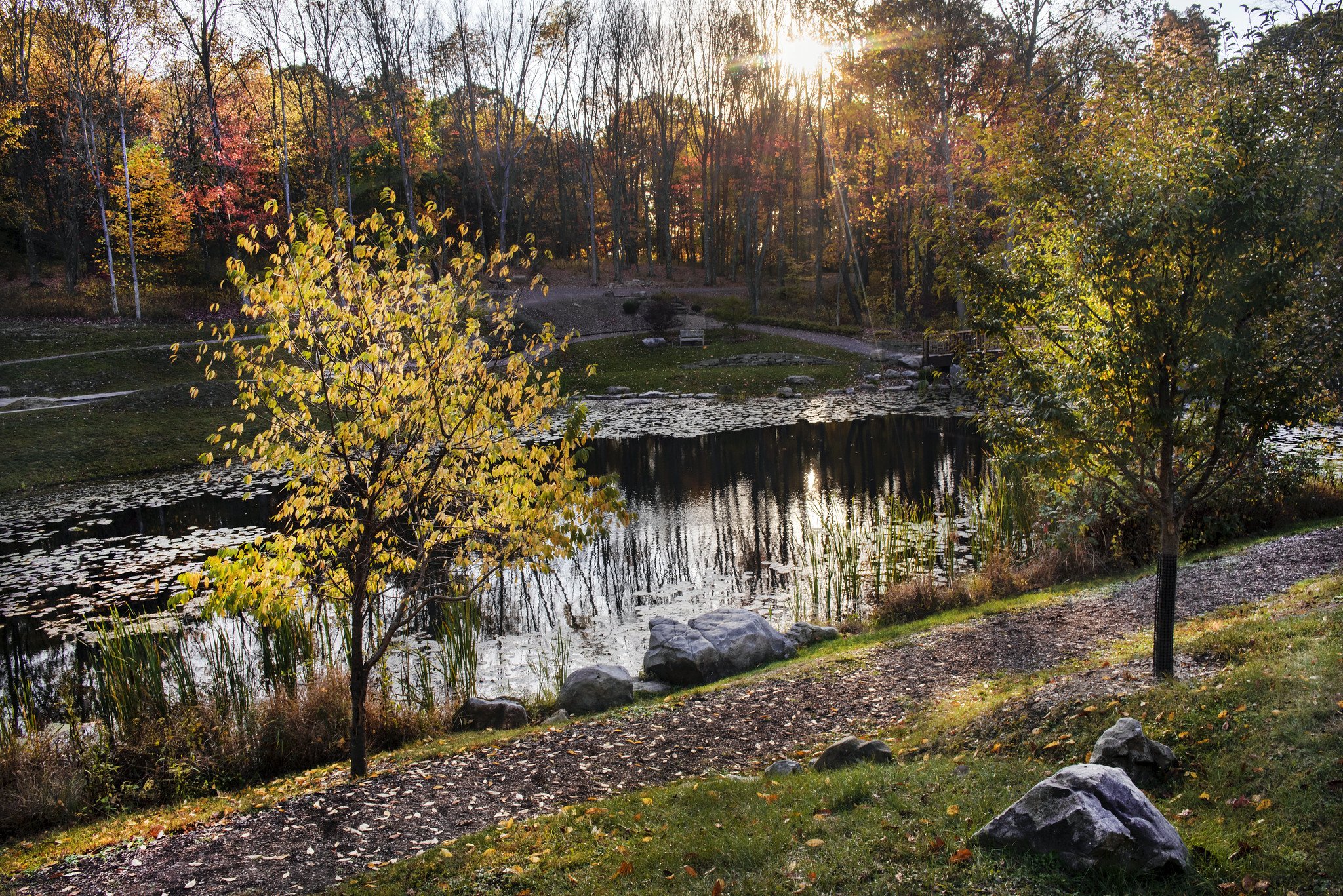Giving Guide: Pittsburgh Botanic Garden
Sponsored Content
Through the intimate, informative experience of nature at Pittsburgh Botanic Garden, young minds are engaged, gardeners are inspired, and all visitors find a sense of calm.
Pittsburgh Botanic Garden is the careful caretaker of 460 acres of southwest Pennsylvania’s land and water. In addition to ongoing conservation efforts such as mitigating acid mine drainage and reforesting tracts of the property, the Garden provides 65 acres of cultivated gardens and woodlands for the public to connect to plants. Through this intimate and informatve experience: young minds are engaged, gardeners are inspired, and all visitors find a sense of calm.
Pittsburgh Botanic Garden opened its new Welcome Center and surrounding Auto Garden on April 1, 2021, completing $12 million of projects to elevate the visitor experience with the addition of garden features, a café, expanded learning rooms, and gathering spaces.
The new entrance and gateway leads all visitors to wonder and wander 65 acres of garden areas and features such as: Garden of the Five Senses, Hillside Pollinator Garden, Asian Garden and Lotus Pond, and Exhibit Garden featuring Carbon Cycle: An Earth Art Exhibit.
Central to the story of Pittsburgh Botanic Garden is the poor condition of the site upon which it is being built. Left in a deplorable state following coal extraction throughout the first half of the 20th Century, the land was unfit for most uses and even dangerous in spots. Further damage was caused by flooding of the mines beneath the surface in 2004, which exposed a severe acid mine drainage problem that also had to be addressed.
Gradually, both land and water are being reclaimed and repaired. Abandoned mine features, invasive species and poor site conditions are being replaced by educational gardens, reconstructed woodlands, and lovely views.
Reforestation efforts are aimed at re-establishing woodland habitats that will once again support diverse bird and wildlife populations and create a shaded site for the future generations to connect with nature through the botanic garden. Through this program, the Garden is providing long-term benefits, including carbon capture, superior soil conservation and lasting habitat improvement.
A few conservation highlights since beginning its land and water reclamation efforts in 2014:
15,000 native saplings were planted to reforest an abandoned mine site. The Garden collaborated with Western Pennsylvania Conservancy, United States Office of Surface Mining and Plant Five for Life.
With no chemical treatments or energy inputs, and minimal maintenance, water once considered ‘dead’ now supports a healthy aquatic ecosystem. The Garden operates three passive water filter systems which neutralize more than 25 million gallons of acid mine discharge each year, prior to it entering the region’s watershed and then the Ohio River.
The first innovative filter system creates the Garden’s Lotus Pond, a focal point of the Japanese Garden. The Garden was recognized for this system as the recipient of the 2014 Pennsylvania Governor’s Award for Environmental Excellence.
The Garden’s work in mitigating acid mine drainage is recognized by the U.S. Office of Surface Mining as a national model and has since been duplicated elsewhere.
To donate to the Pittsburgh Botanic Garden, visit pittsburghbotanicgarden.org.
STORY AND PHOTOGRAPHY BY PITTSBURGH BOTANIC GARDEN
12 Month - 6 issue subscription












Indulge in the taste spring with this delicious Cherry Galette